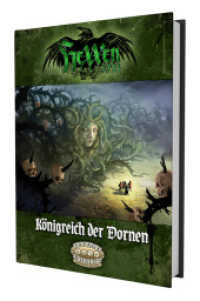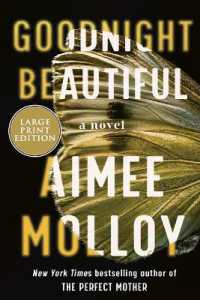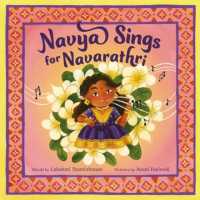Full Description
Despite its importance as a central feature of musical sounds, timbre has rarely stood in the limelight. First defined in the eighteenth century, denigrated during the nineteenth, the concept of timbre came into its own during the twentieth century and its fascination with synthesizers and electronic music-or so the story goes. But in fact, timbre cuts across all the boundaries that make up musical thought-combining scientific and artistic approaches to music, material and philosophical aspects, and historical and theoretical perspectives. Timbre challenges us to fundamentally reorganize the way we think about music.
The twenty-five essays that make up this collection offer a variety of engagements with music from the perspective of timbre. The boundaries are set as broad as possible: from ancient Homeric sounds to contemporary sound installations, from birdsong to cochlear implants, from Tuvan overtone singing to the tv show The Voice, from violin mutes to Moog synthesizers. What unifies the essays across this vast diversity is the material starting point of the sounding object. This focus on the listening experience is radical departure from the musical work that has traditionally dominated musical discourse since its academic inception in late-nineteenth-century Europe.
Timbre remains a slippery concept that has continuously demanded more, be it more precise vocabulary, a more systematic theory, or more rigorous analysis. Rooted in the psychology of listening, timbre consistently resists pinning complete down. This collection of essays provides an invitation for further engagement with the range of fascinating questions that timbre opens up.
Contents
INTRODUCTION
1. Timbre: Alternative Histories and Possible Futures for the Study of Music
Emily I. Dolan and Alexander Rehding
PART I PHILOSOPHIES
2. The Matter of Timbre: Listening, Genealogy, and Sound
Daniel Villegas Vélez
3. Deconstruction and Timbre
Naomi Waltham-Smith
4. Timbrality: The Vibrant Aesthetics of Tone Color
Isabella van Elferen
5. Qur'an Alphabetics and the Timbre of Recitation
Peter McMurray
6. Translations: Adorno and Dahlhaus
6.1. Introduction
Thomas Patteson
6.2. The Function of Timbre in Music (1966)
Theodor W. Adorno, translated by Thomas Patteson
6.3. On the Theory of Instrumentation (1985)
Carl Dahlhaus, translated by Thomas Patteson
PART II HISTORIES AND CULTURES
7. Ethereal Timbres
Emily I. Dolan and Thomas Patteson
8. Timbre-Centered Listening in the Soundscape of Tuva
Theodore Levin and Valentina Süzükei
9. Tracing Timbre in Ancient Greece
Naomi Weiss
10. Early Modern Voices
Bettina Varwig
11. Timbre Before Timbre: Listening to the Effects of Organ Stops, Violin Mutes, and Piano Pedals, c. 1650-1800
Deirdre Loughridge
12. Schoenberg as Sound Student: Pierrot's Klang
Joseph Auner
13. Futurist Timbres: Listening Failure in Milan
Gavin Williams
PART III TECHNOLOGIES
14. Timbral Thievery: Synthesizers and Sonic Materiality
Jonathan De Souza
15. Timbre/Techne
Alexander Rehding
16. Technology and Timbre: Features of the Changing Instrumental Soundscape of the Long Nineteenth Century (1789-1914)
Elizabeth Bradley Strauchen-Scherer
17. Don't Choose the Nightingale: Respighi, Mimesis, and the Limits of Timbre
Arman Schwartz
18. The Naturalization of Timbre: Two Case Studies
Alexandra Hui
19. Music for Cochlear Implants
Stefan Helmreich
PART IV PERCEPTION AND ANALYSIS
20. Perceptual Processes in Orchestration
Meghan Goodchild and Stephen McAdams
21. Timbre as Harmony-Harmony as Timbre
Robert Hasegawa
22. Timbre and Polyphony in Balinese Gamelan
Michael Tenzer
23. Describing Sound: the Cognitive Linguistics of Timbre
Zachary Wallmark and Roger A. Kendall
24. Timbre, Komplexeindruck, and modernity: Klangfarbe as a Catalyst of Psychological Research in Carl Stumpf, 1890-1926
Sebastian Klotz
25. Pitch vs. Timbre
Daniel K. S. Walden
26. "Where Were You When You Found Out Singer Bobby Caldwell Was White?": Racialized Timbre as Narrative Arc
Nina Sun Eidsheim and Schuyler Whelden








